Caterpillars are creepy? Each time I saw a worm or a caterpillar wriggling, I would let out a shriek that would stun people around me. They sniggered when they found the reason. Times change and I now adore caterpillars. I got into the company of some ardent butterfly watchers, who did not mind lying on slushy ground or walking miles together in pursuit of butterflies. With them, I started to learn fascinating facts about butterflies. Butterflies exhibit mimicry, they migrate, plan amazing strategies to avoid predators; the list goes on. One life time is not enough to learn about them. To understand butterflies better, one has to learn botany as well.
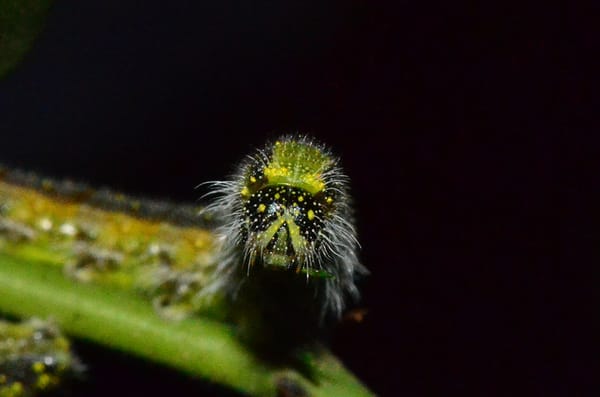
Pioneer caterpillar
On one instance, I had collected a Pioneer Caterpillar from a capparis plant from one of my trails. When I got back home I kept the caterpillar in a container and offered capparis leaves which I had collected from my neighbourhood. The caterpillar did not touch the leaves at all. I was worried as to why it was not eating. Then I realised that I had given it the wrong leaves. My kids giggled when they found me trying counsel the caterpillar by pleading, “Swalpa adjust maadi, tomorrow I will get you capparis leaves to eat”. I panicked because if the caterpillar did not eat, it would die. I searched thoroughly for the right plant in my neighbourhood and finally found it near a railway line. What a relief it was when the caterpillar finally started eating. This caterpillar ate and finally turned into the beautiful butterfly below. This butterfly taught me to identify a plant which I will never forget.
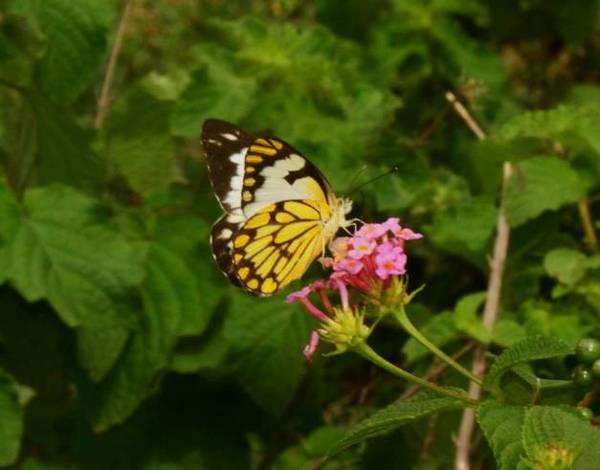
Pioneer butterfly
On our visit to Foundation for Revitalisation of Local Health Traditions (FRLHT), we found two species of Aristolochia which had eclectic patterns on them. Trying to figure out a pattern in nature is a pretty engaging activity by itself. Though there were so many other flowering plants around, this flower with its psychedelic pattern kept capturing our attention on it for a long time. This pattern of the flower of Aristolochia elagans looks like a fractal image. These patterns and the flower’s characteristic smell, attracts pollinators inside the flower. After the insect is brushed with pollens, it is let out. A detailed description can be found here.

Aristolaochia elagans

Pattern on Aristolochia elegans
Dutchmans pipe (Aristolochia elegans) is native to South America. The Richmond Birdwing butterfly lays its eggs on Aristolochia elegans instead of its host plant, (Pararistolochia praevenosa), which belongs to the same family as A.elegans. The butterflies probably look out for larval host plants by checking their chemical constituents. So the caterpillars that come out of eggs that are laid on A.elegans do not survive, as this is not the plant it is supposed to lay eggs on. Aristolochia elegans is a major threat to the Richmond Birdwing butterfly.
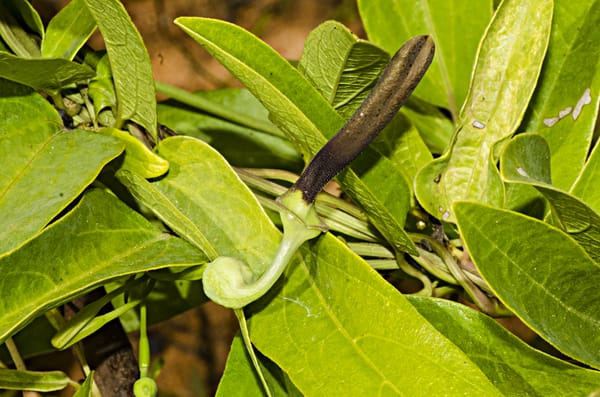
Aristolochia Indica
The Crimson Rose butterfly and the Southern Birdwings’ common larval host plant is Aristolochia indica. These butterflies feed on these poisonous plants to keep predators away.
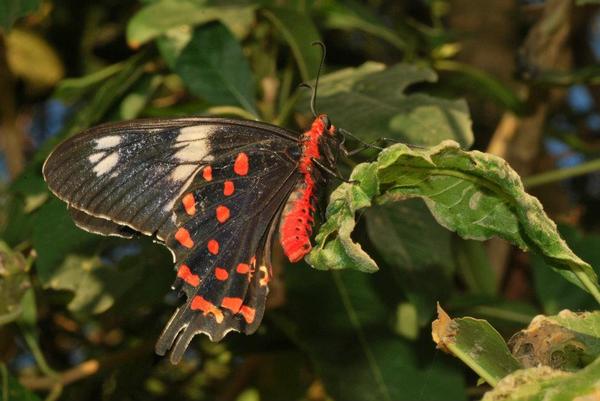
Crimson rose
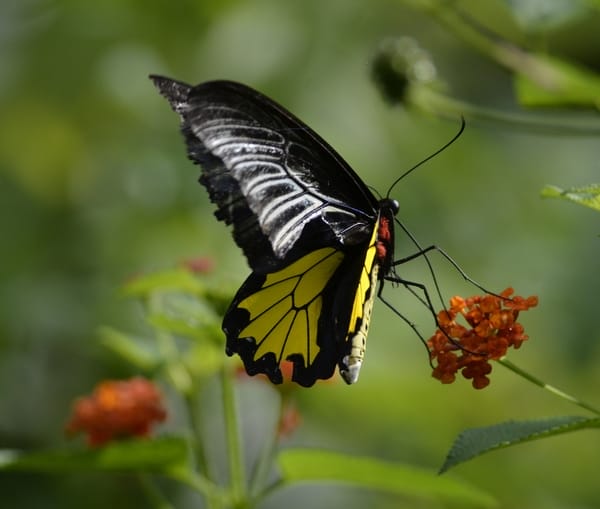
Southern Birdwing
Despite its survival mechanisms to evade predators, sometimes these butterflies do tend to lay eggs on the plants belonging to the same family (Aristolochiae), but different species, as a result of which the larvae dies. After the Capparis incident, I had assumed that butterflies cannot make mistakes, but now I realise that they do tend to make mistakes. There is no end to learning when we start wondering about facts that fascinate us.
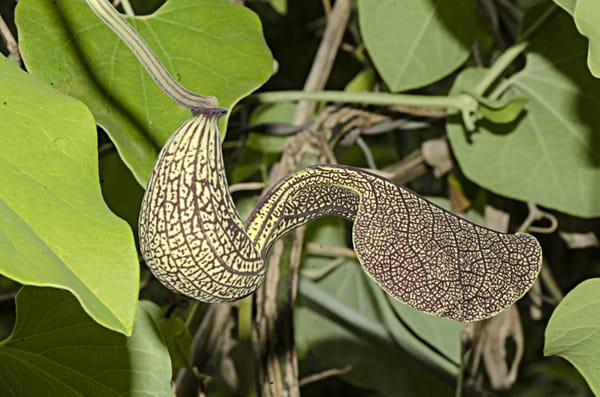
Aristolochia ringens. This is not a larval host plant for butterflies, but it is possible that butterflies can be fooled by the chemical constituents of this plant and lay eggs on it, resulting in offspring which may not survive
Plant taxonomists are figuring out ways to identify the plants in a more accurate ways. Aristolochia species have very good medicinal uses. The fractal descriptors provide an accurate and reliable method of discrimination of the plant species. It is a powerful method for analysing plants using only their leaves. This is a remarkable finding, as the leaves are almost always available and the computational technique is simple and inexpensive. This study will be useful for analysing ethanopharmacological field data, with the aim to select species with most prominent impact to treat a single disease.
References: